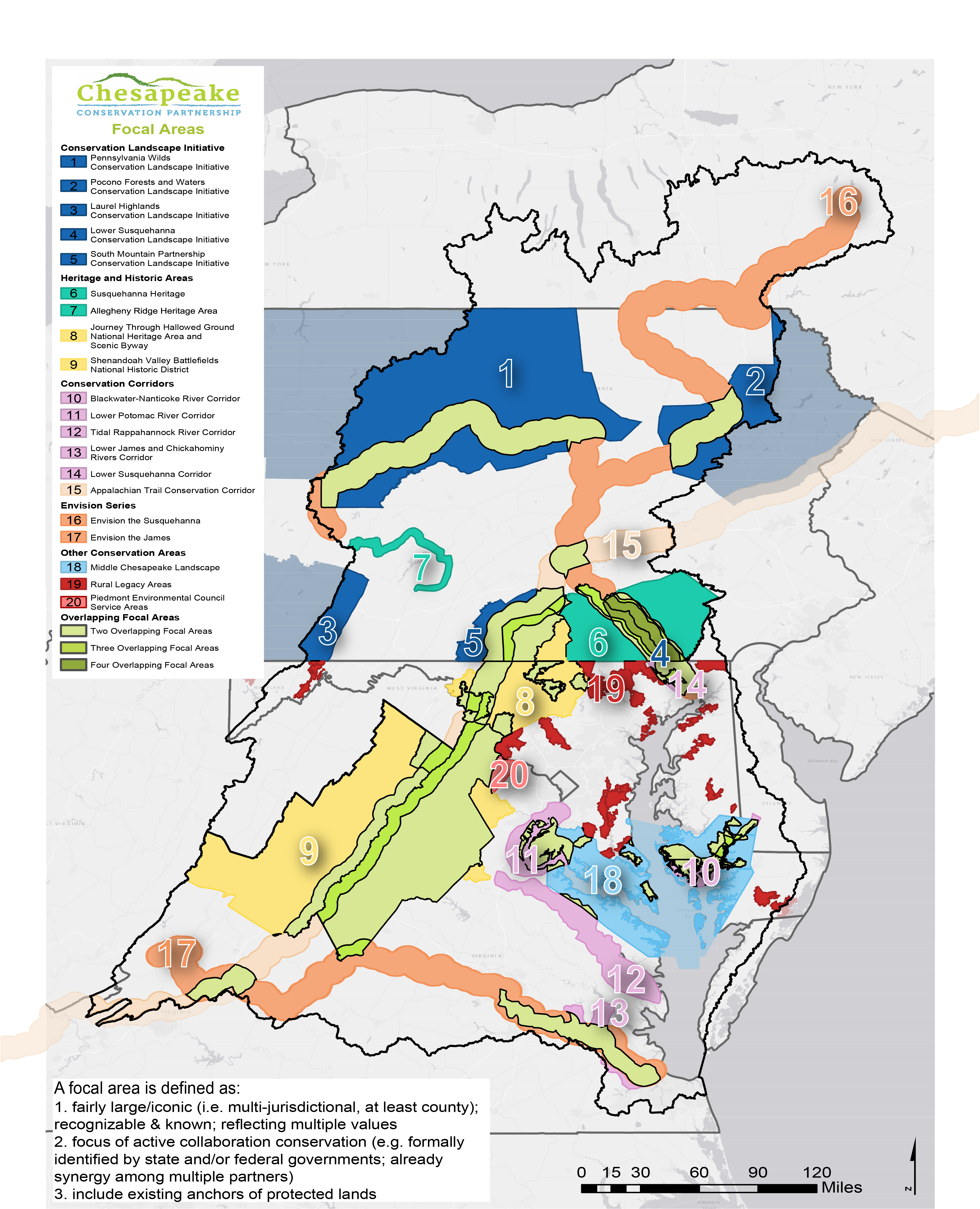Identifying Our Conservation Focal Areas
The Chesapeake Conservation Partnership met in 2012 and identified the need to align funding, programming, and resources, and to focus efforts on areas where there is an opportunity to succeed in a reasonable time frame. “Be bold but achievable,” participants said; “don’t color in everything on the map ‐ if everything is priority, nothing is a priority.”
Everyone clearly recognized the entire Chesapeake watershed as the overall “large landscape,” but noted that its size prevents a focus on all its area at once. The discussion recognized a series of still large landscapes within the watershed that are iconic in their own right and are the focus of active collaborative conservation efforts. This suggested focusing first on areas where there is already synergy among partners, capacity for active collaboration, and existing anchors of protected land from which to build.
For example, participants noted the alignment of multiple interests, resources and efforts along the Middle Potomac, where nongovernmental organizations, state governments and several federal agencies are actively collaborating. The same is true along the Nanticoke, Rappahannock, James, Lower Susquehanna and Journey Through Hallowed Ground, to name a few.
These types of landscapes provide opportunities for making things happen in a “reasonable time frame,” while also giving tangible focus and clarity within the region. They can also provide case studies of how collaborative conservation works, an advantage for building synergy and capacity in additional landscapes. Participants also noted the utility of LandScope Chesapeake for identifying and clarifying the mutual interests in landscapes, and for facilitating collaboration and focus through shared information. They viewed this as one means for using the best science – broadly defined to include natural and social sciences – for informing efforts to focus and be strategic.
Partners have used LandScope Chesapeake to look at the question “where is there documented collaborative landscape conservation focused on specific landscapes? In effect, where are our existing focal areas?”
The group considered this in the context of landscapes which: (a) are fairly large and iconic in their own right (i.e. multijurisdictional, at least at the county level; recognizable and known as a landscape unit; reflecting multiple values (natural, cultural, historical, recreational); (b) are the focus of active collaborative conservation efforts (e.g. designated or formally recognized by state and/or federal governments; already synergy among multiple partners engaged in conservation and related activities; demonstrated capacity for active collaboration); and (c) include existing anchors of protected land from which to build. The map below represents an initial draft of the existing conservation focal areas recognized by the group as meeting these parameters; there may be additional focal areas that have been missed.
Further time needs to be allocated to exploring the question “where are there areas that seem to have high conservation value but that don’t seem to be addressed by an existing concerted effort?”

